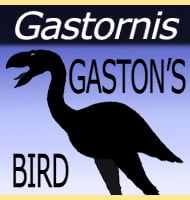Liaoningornis
In Depth Liaoningornis was one of the first of the constantly expanded number of Mesozoic bird genera discovered in China’s Liaoning province, and although the remains are very incomplete, they indicate a fairly more advanced form than other early Cretaceous bird genera. The sternum (breast bone) of Liaoningornis is deeply keeled to allow for the … Read more
